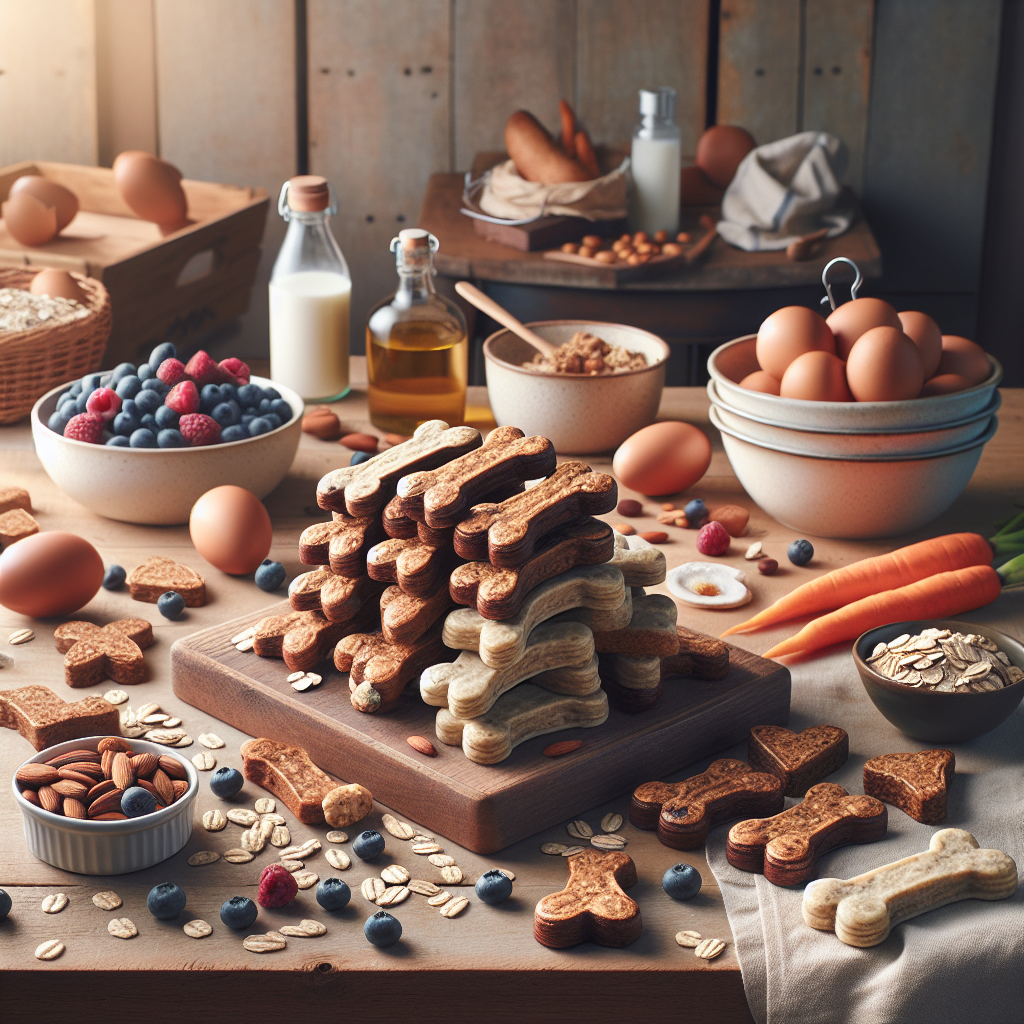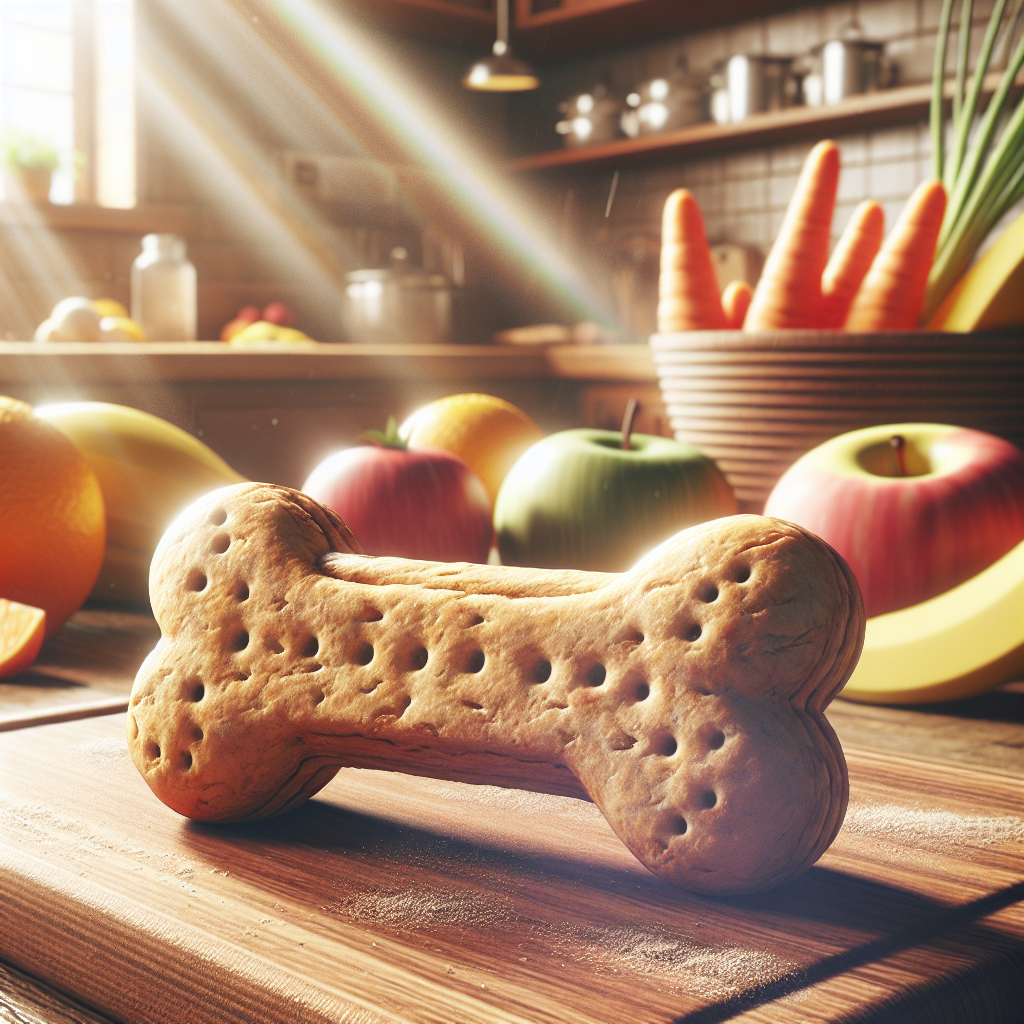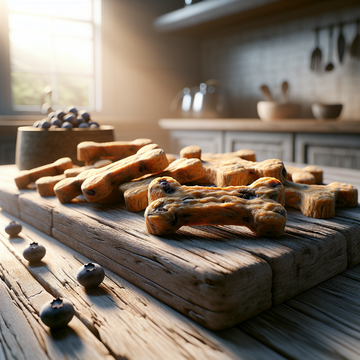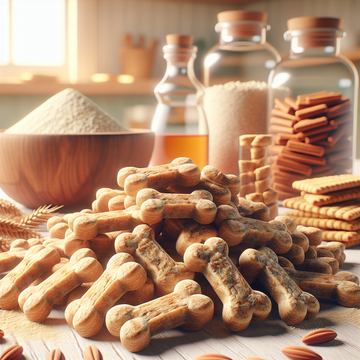How to Keep Homemade Dog Treats from Molding: Tips!
When it comes to making homemade dog treats, one of the biggest concerns is ensuring they don't develop mold. Understanding the underlying causes of mold growth is crucial for both the safety of your furry friend and the longevity of your tasty creations.
Mold is a type of fungus that thrives in environments with moisture, warmth, and organic material. Here are some key factors that contribute to mold formation in homemade dog treats:
- Moisture Content: High moisture levels in your dog treats can create a breeding ground for mold. Ingredients like fresh fruits or vegetables can increase moisture, so it’s essential to balance their use.
- Storage Conditions: Storing your treats in warm, humid areas can accelerate mold growth. Always keep them in a cool, dry place to help extend their shelf life.
- Natural Ingredients: Unlike commercial dog treats, homemade versions often lack preservatives. While this is a healthier choice, it also means they are more susceptible to spoilage, including mold.
- Contamination: Always ensure that your preparation area and utensils are clean. Contaminated surfaces can introduce mold spores to your treats.
By recognizing these factors, you can take proactive steps to prevent mold growth effectively. Treat your furry friend to the joy they deserve with our range of delicious and nutritious dog treats that are designed to stay fresh and healthy. Explore more at Happypup.dog!
Choosing the Right Ingredients for Freshness

When creating homemade dog treats, the choice of ingredients plays a significant role in ensuring freshness and minimizing the risk of mold. Selecting the right ingredients not only enhances the flavor of the treats but also contributes to their shelf stability. Here are some tips on choosing the best ingredients:
- Use Whole Grains: Opt for whole grains like oats or brown rice flour, which are less likely to retain moisture compared to refined flours. Whole grains also provide essential nutrients and fiber.
- Incorporate Healthy Fats: Ingredients like coconut oil or peanut butter can help improve texture and flavor, while also providing energy. Just be cautious about the quantity, as excess fat can lead to quicker spoilage.
- Avoid High Moisture Ingredients: While fruits and vegetables can be great for flavor, they often contain high water content. Consider using dried fruits or vegetables that have a lower moisture level to maintain freshness.
- Include Natural Preservatives: Ingredients such as honey or cinnamon not only add flavor but also possess natural preservative qualities that help inhibit mold growth.
By selecting high-quality, fresh ingredients and being mindful of moisture content, you can create dog treats that are not only delicious but also safe and long-lasting. Proper ingredient choices are a fundamental step in ensuring that your homemade dog treats remain healthy and mold-free.
Best Storage Methods for Homemade Dog Treats

Once you’ve crafted delicious homemade dog treats, the next step is to ensure they are stored correctly to maintain their freshness and prevent molding. The right storage methods can significantly extend the shelf life of your treats, making them more enjoyable for your furry friend. Here are some effective storage methods:
- Cool, Dry Place: Store your homemade dog treats in a cool, dry environment. A pantry or cupboard away from direct sunlight is ideal, as heat and humidity can promote mold growth.
- Air-tight Containers: Use air-tight containers made of glass or plastic to keep moisture out. This helps preserve the texture and taste of the treats, ensuring they stay fresh for longer periods.
- Refrigeration: For treats that contain perishable ingredients, such as yogurt or high-moisture fruits, refrigerate them. Be sure to use a sealed container to avoid absorbing odors from other foods.
- Freezing: If you’ve made a large batch, consider freezing some of the treats. Place them in a freezer-safe bag or container. When you’re ready to use them, simply thaw at room temperature or warm them slightly in the microwave.
By implementing these storage methods, you can keep your homemade dog treats fresh and ready for your pet to enjoy. Proper storage not only extends the life of your treats but also ensures that your dog receives the best in quality and flavor.
How to Use Preservatives Safely in Dog Treats

When making homemade dog treats, you may consider using preservatives to prolong their shelf life. However, it's essential to use preservatives safely and wisely to ensure the health and well-being of your furry friend. Here are some guidelines on how to do just that:
- Choose Natural Preservatives: Opt for natural preservatives like vitamin E (tocopherol) or rosemary extract. These not only help preserve the treats but also contribute beneficial nutrients.
- Use Preservatives Sparingly: Less is often more when it comes to preservatives. Use the minimal amount necessary to achieve desired results, and always follow recommended guidelines for any product you choose.
- Read Labels Carefully: If you're purchasing pre-made preservatives, ensure they are specifically designed for pet consumption. Some additives safe for humans can be harmful to dogs.
- Consult with a Veterinarian: If in doubt, consult your veterinarian about the use of preservatives in your dog's diet. They can provide personalized advice based on your dog's health needs.
By following these tips, you can safely incorporate preservatives into your homemade dog treats, ensuring they remain fresh while prioritizing your dog's health. Remember, the goal is to create delightful and safe treats that your pet will love!
Signs Your Dog Treats Have Molded
Being able to identify moldy dog treats is crucial for your pet's health and safety. Mold can develop quickly, especially in homemade treats, and consuming moldy food can lead to digestive issues or more severe health problems. Here are the key signs that your dog treats have molded:
- Visible Mold: The most obvious sign is the presence of visible mold, which can appear as fuzzy spots or discoloration. Mold may be white, green, or black, and it can grow on the surface of the treats.
- Unpleasant Odor: If the treats have an off or sour smell, this could indicate spoilage. Fresh dog treats should have a pleasant aroma, and any unpleasant scent is a red flag.
- Change in Texture: Moldy treats may feel slimy or excessively moist. If the texture has changed significantly from when they were first made, it’s best to discard them.
- Discoloration: Any unexpected changes in color, especially dark spots or areas that look different from the original treat, can signal the presence of mold.
It’s always better to err on the side of caution. If you suspect that your dog treats have molded, it’s advisable to throw them away. Regularly checking your homemade dog treats for these signs will help you keep your furry friend safe and healthy.
Tips for Extending Shelf Life of Dog Treats

To ensure your homemade dog treats remain fresh and delicious for as long as possible, it's essential to follow some practical tips. Here are effective strategies on how to extend the shelf life of dog treats:
- Proper Storage: Store your treats in an airtight container to minimize exposure to air and moisture, which can accelerate spoilage. Glass jars or resealable bags work well for this purpose.
- Refrigeration: For treats that contain perishable ingredients like eggs or dairy, consider refrigerating them. This can significantly prolong their freshness.
- Freezing: If you want to keep your treats for an extended period, freezing is an excellent option. Portion your treats into smaller sizes and store them in freezer-safe containers or bags. Defrost them as needed.
- Use Natural Preservatives: Consider incorporating natural preservatives like vitamin E or rosemary extract, which can help inhibit the growth of mold and bacteria.
- Choose the Right Ingredients: Opt for low-moisture ingredients and avoid using perishable items that have a shorter lifespan. Ingredients like whole grains, oats, and peanut butter can help extend shelf life.
By implementing these tips, you can keep your dog treats fresher for longer, ensuring your furry friend enjoys tasty and nutritious snacks every time. Treat your furry friend to the joy they deserve with our range of delicious and nutritious dog treats. Check them out today!





